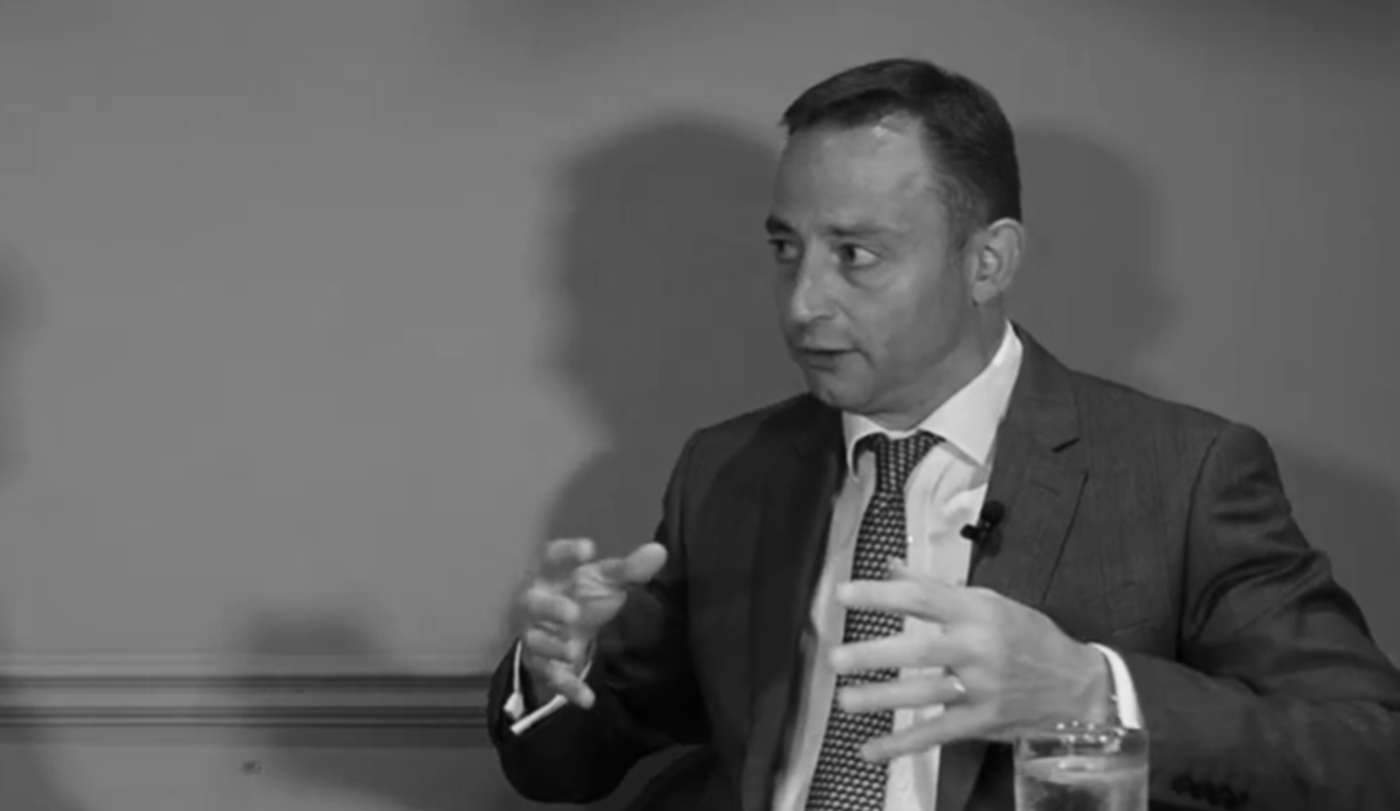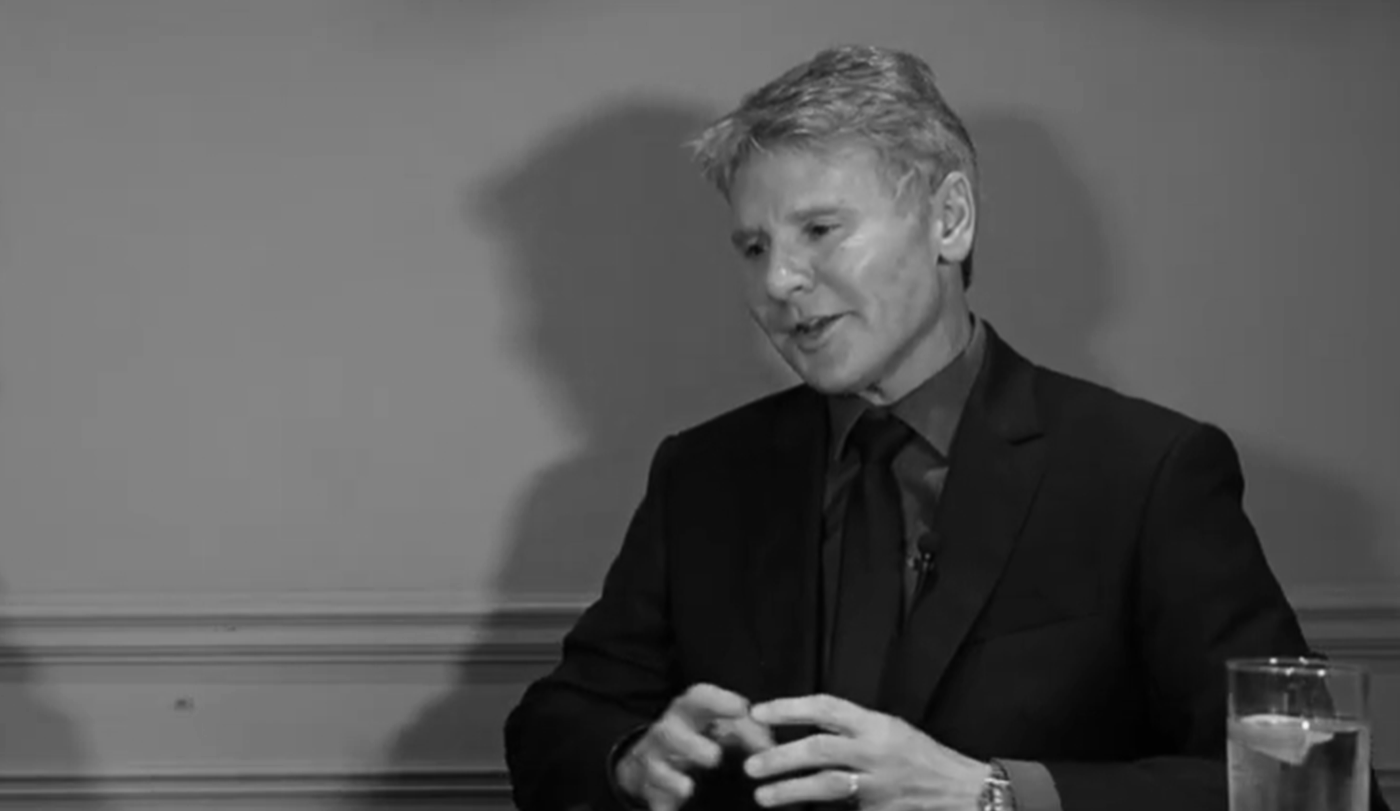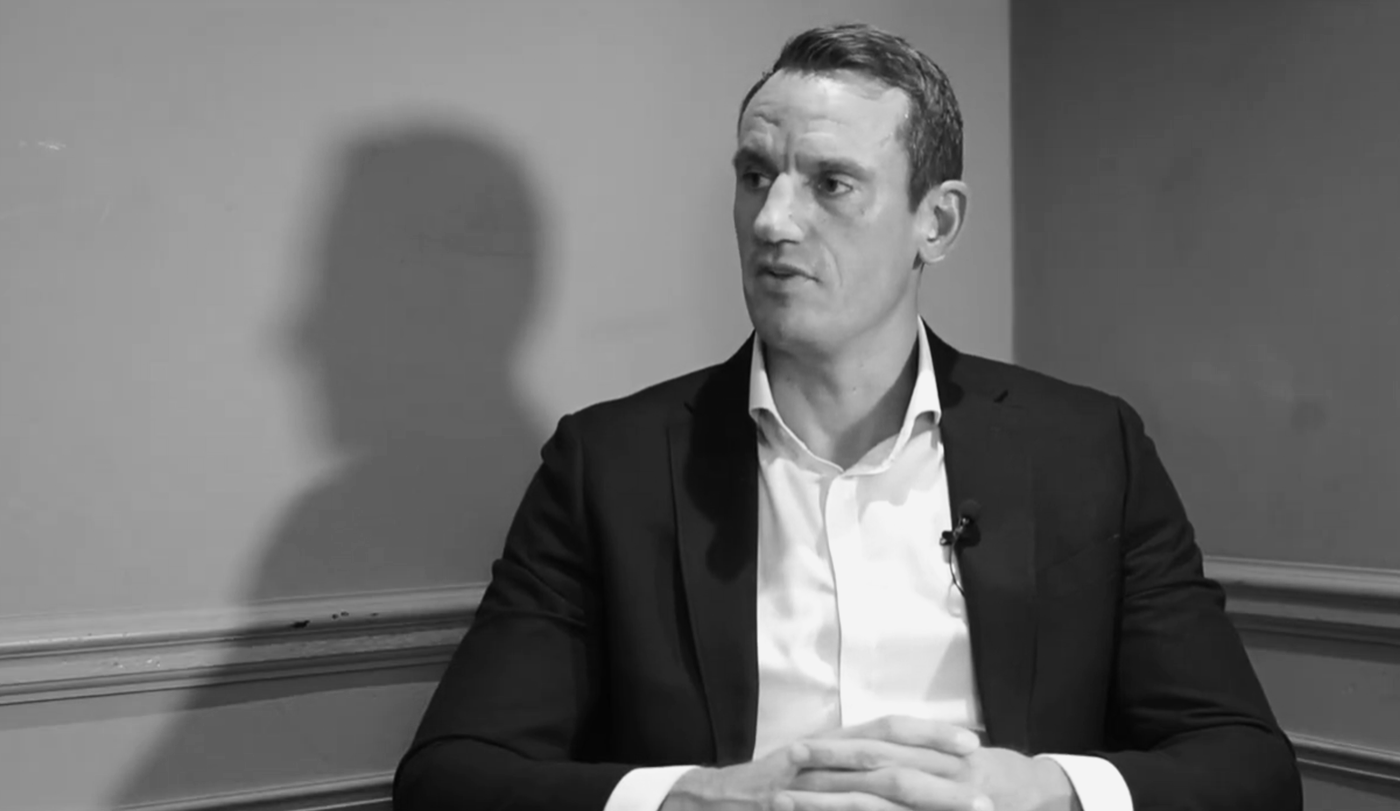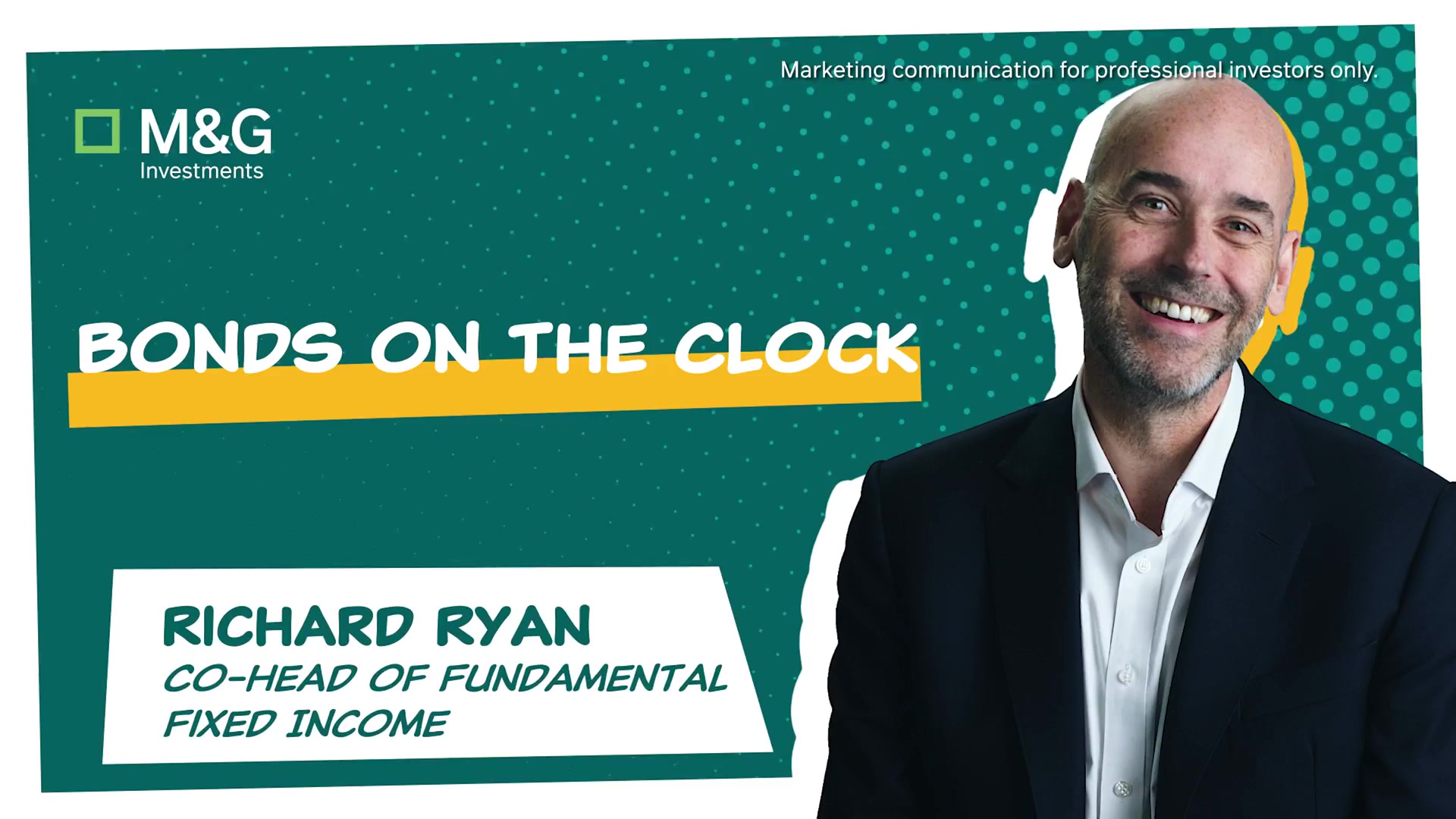On the ‘consistently-consistent’, wealth management 2.0 and never fielding 11 goalkeepers
In our regular video series, we interview the wealth sector’s key decision-makers to discover how they think about life, both within the world of investment and beyond it; what brought them into the business and what keeps them here; and what makes them and their companies tick
When it comes to picking funds, identifying the “consistently-consistent” managers and strategies is crucial for Richard Philbin, senior investment director at Hawksmoor Investment Management. “Markets are up and down on a daily basis so if you can find a manager who has a clear path to where they want to go, that makes things much better,” he tells Wealthwise editorial director Julian Marr in our latest Choice Words episode, above.
“Now, they can have a clear path whether they are running a 30-stock portfolio with no turnover, or a 500-stock portfolio with 100% turnover. It really doesn’t matter – as long as you understand what they do, why they do it, how they do it and what the likelihood is of them being able to deliver tomorrow what they delivered yesterday. That is the comfort factor we look for.
“We tend to have a relatively low portfolio turnover – in the way we build portfolios – because we don’t want to double-guess what the managers are already double-guessing is going to happen to the markets. Conversely, if we can buy into that process and run with it for the medium to longer term, then I’m very happy.
“So I work much more by exception reporting – you know, when you have tens of thousands of collective investments to look at, if you can find the ones that are consistent on a consistent basis, why do you need to bother with the others?”
As for where alternative investments fit into that worldview, Philbin argues it all depends on what investors are looking for when constructing their portfolios. “Not only do we like to buy managers for the long term, we like to build strategic asset allocations rather than tactical ones,” he elaborates. “Obviously, you have to be mindful of what’s happening in the short term – but we tend to take a longer-term view and then tilt as we move into different economic scenarios.
Of course, a goalkeeper is a footballer – but they do a very different job to an attacker. Correspondingly, you shouldn’t put 11 goalkeepers – or 11 attackers – on the pitch.”
“The great thing about alts – and we do use them – is the diversification benefits. I do like to talk about football and, of course, a goalkeeper is a footballer – but they do a very different job to an attacker. Correspondingly, you shouldn’t put 11 goalkeepers – or 11 attackers – on the pitch.
“Alts can add value and they do add value – but it’s when you use them and how you use them. Ultimately, if you can find something that can achieve part of your desired outcome – and do it in a lowly-correlated or more diversified way, which allows you to add a bit of blend into your portfolio – then I’m all for it.
‘Okay-ness to fail’
Asked later on how he views the best and worst-case scenarios for the future of UK wealth management, Philbin argues: “We need less compliance, less regulation, more ‘buyer beware’, more incentives and an economy that welcomes innovation and challenge and the ‘okay-ness’ to fail – rather than this attitude of, ‘Close the door, close the door, close the door’, whenever something seems to go wrong.
“There is nothing wrong in failing. When I when I was growing up, I used to ride horses and there’s a saying, ‘49 falls makes a rider’. You can fall off and get back on – but the idea is, you do get back on and you do it again. And yet money can be such an emotive subject.
“People can normally make mistakes – in fact, apart from buying a house and making an investment, everyone is happy to lose money on everything else they purchase. And yet it seems to be that you are not allowed to make losses or that none of your investments are allowed to go south. Well, of course, that can happen. That is what capitalism is – it is the levelling out of value versus risk-taken.
“So I personally think regulation needs to free up a bit so that you can carry losses forward and you are allowed to take risks. And there is so much in what we do that is subjective – you know, your definition of risk or your definition of ‘balanced’ or whatever might be different to mine. So to go down a measured route of, This is the way you must invest – this is low risk, this is high risk – is quite silly.
“Take that wonderful scenario of Truss and Kwarteng – the gilt market was more volatile than the crypto market! How do you define risk there? You know, gilts are meant to be the lowest-risk asset – along with cash – but there are times when they’re not, and you just have to accept that and roll with it.”
A full transcript of this episode can be found after this box while you can view the whole video by clicking on the picture above. To jump to a specific question, just click on the relevant timecode:
00.00: What excites you about the current investment outlook? What worries you?
02.50: What do you most look for in an individual investment? What constitute red flags?
04.54: To what degree should professional investors be thinking beyond so-called traditional investments? Towards what?
06.53: What is your approach to client communications?
10.27: What was your path into investment – and, if you had not taken it, what do you think you would be doing now?
13.10: What is the biggest investment mistake you are prepared to admit to – and what did you learn from it?
15.28: What do you see as the best and worst-case scenarios for the future of wealth management in this country?
18.47: What advice would you have given your younger self on your first day in this business?
20.41: Two Choice Words recommendations, please – one a book; one a free choice?
Transcript of Choice Words Episode 23:
Richard Philbin, with Julian Marr
JM: Well, hello and welcome to another in our series of ‘Choice Words’ videos, where we get to meet the great and the good of UK fund research and UK fund selection and find out what makes them tick. I am Julian Marr, editorial director of Wealthwise, and today I am delighted to be talking to Richard Philbin, senior investment director at Hawksmoor Investment Management. Hello, Rich. How are you?
RP: I’m very well, Julian. Good seeing you again.
JM: That is very kind – bodes well for the rest of the interview! Let’s kick in with the ‘signature’ first question – what excites you about the current investment outlook? What gives you pause for thought?
RP: Let’s start with an easy one, shall we!. The thing is, there has always got to be something that’s going to excite you – because, when you’re investing, there are so many different asset classes, so many different geographies, so many different managers, so many different styles. What excites me is the fact we have probably peaked on interest rates – and a falling interest rate environment generally means things are likely to be better for companies and therefore profits and therefore stockmarkets.
But I do fear there is a red flag of a potential recession around the corner – and, of course, one of the reasons interest rates start to fall is because economies are slowing down! The world seems to be awash with a lot of very good ideas at the moment but unfortunately – or fortunately, depending on which way you look at it – with a lot of them, the growth that has been achieved in markets has been driven by a very narrow number of stocks.
And should those ‘Magnificent Seven’ – which make up a huge chunk of the US, and therefore a huge chunk of the world – start to roll over, that could scare people. And that obviously isn’t good. And then one of the other things that really worries me is the uncertainty surrounding the commander-in-chief in the US – as to what he does, where he does it and how he does it.
So I guess, having done this job for decades, the thing that really excites me is the potential for active management to come to the fore again and the opportunity set to make returns over and above the index – because of the way the index is comprised at the moment. Ultimately, I think, there are some potential good times ahead.
JM: We are only one question in and already it is a rollercoaster of emotions! I went down a bit, then up a bit, then down a bit …
RP: Well, that’s it. That’s what markets are. If you knew where everything was going on a daily basis, it certainly wouldn’t be fun!
‘Consistently-consistent’
JM: Strap yourselves in, folks – here we go! Question two. That was the macro – thinking big thoughts – let’s now narrow in on, What do you look for most in an individual investment? And you mentioned red flags – what stands out as a red flag when you are looking at investments?
RP: OK – what we look for is consistency. And if I can find ‘consistently-consistent’ funds and fund managers and fund-manager approaches, then that to me is the best thing. As I intimated in the last question, markets are up and down on a daily basis and you don’t know where they’re going to go – so if you can find a manager who has a clear path to where they want to go, that makes things much better.
Now, they can have a clear path whether they are running a 30-stock portfolio and no turnover, or a 500-stock portfolio and 100% turnover. It really doesn’t matter – as long as you understand what they do, why they do it, how they do it and what the likelihood is of them being able to deliver tomorrow what they delivered yesterday. That is the comfort factor we look for.
We tend to have a relatively low portfolio turnover – in the way we build portfolios – because we don’t want to double-guess what the managers are already double-guessing is going to happen to the markets. Conversely, if we can buy into that process and run with it for the medium to longer term, then I’m very happy.
And so I guess the red flag is the complete opposite of what I’ve just said. It is when you have sat down with managers and said, How have you achieved the returns? And they don’t really know or they have been lucky. Or they might have a 50-stock portfolio, but all the attribution comes from a limited number – or they have got lucky on right sectors that they have just fallen into.
So I work much more by exception reporting – you know, when you have tens of thousands of collective investments to look at, if you can find the ones that are consistent on a consistent basis, why do you need to bother with the others?
Don’t field 11 goalies
JM: I am almost too nervous to ask my next question now, which is about the need for professional investors to look beyond so-called traditional assets to the world of alts. You have been around the industry a year or two and have seen things come and go – what do you feel about that at the moment?
RP: I think it ultimately depends on what it is you’re looking for when you’re constructing a portfolio. Not only do we like to buy managers for the long term, we like to build strategic asset allocations rather than tactical ones. Obviously, you have to be mindful of what’s happening in the short term to try and get there – but we tend to take a longer-term view and then tilt as we move into different economic scenarios.
The great thing about alts – and we do use them – is the diversification benefits. You have known me a very long time and you know I like to talk about football. And you can consider a goalkeeper a footballer – but, of course, a goalkeeper does a very different job to an attacker. Correspondingly, you shouldn’t put 11 goalkeepers on the pitch and you shouldn’t put 11 attackers on the pitch.
To me, then, alts can add value and they do add value – but it’s when you use them and how you use them. The due-diligence you have got to do on an alts manager is slightly different because what they are trying to achieve tends to be quite different to your traditional equity and bonds.
Now, whether you consider property to be alts, or whether you consider commodities to be alts, or whether you consider absolute return to be alts or how you treat all of that – private equity, private debt and so on and so forth – that makes it a little bit more complex. But ultimately, if you can find something that can achieve part of your desired outcome – and do it in a lowly-correlated or more diversified way, which allows you to add a bit of blend into your portfolio – then I’m all for it.
Wealth management 2.0
JM: Top football analogy as well, which leads neatly into our next question – on how you approach communicating with clients. Is it entirely football-based! Also, is there such a thing as ‘the right type of client’ – by which I mean, How do you make sure you bring a client on board for the whole journey so they don’t miss out on the good stuff at the beginning and the good stuff at the end?
RP: That is an awful lot of questions there in one!
JM: I usually ask six questions at once – bear with me!
RP: The part of the business at Hawksmoor I work within is called the solutions business – and we like to think, within that, we are working in ‘wealth management 2.0’ not ‘wealth management 1.0’. In essence, what we are running are bespoke model portfolios, but for individual clients.
Whereas, if I consider ‘wealth management 1.0’ to be building model portfolios, that would be where we dictate the number of holdings. We dictate what ‘cautious’ looks like, what ‘balanced’ looks like, what the income level is. We dictate which platforms we are offering our services on. We dictate what the benchmark is – and many other factors.
Within the solutions business, we consider it as ‘wealth management 2.0’ because we work with the adviser – and they can tell us what they think ‘balanced’ looks like. They can tell us what exposure they want us to have with regard to active versus passive, for instance, or ESG or ‘we want no more than 10% in an individual holding’ and various factors like that.
This is part and parcel of the initial service we offer so we are bringing the clients on board with this, actually in mind – and therefore we’re bringing them on the journey from day one. They realise that they need to change their centralised investment proposition or their business model and they want to work with us or partner with us – have a joint venture with us, in essence.
And therefore we can tell them, This is what we want to do and this is how we want to do it. But then they can say, Well, yes – but you have got to do it along these lines. So, in essence, we sit down together with a blank piece of paper and say, What works? What doesn’t work? How do we do this? How do we not do this? And because of that, it allows you both to be on that same page from day one. Now I know you asked me lots of questions but I’ve completely forgotten what the other ones were!
JM: No, no – I thought that was pretty good, actually. I was asked about communicating with clients – and then encouraging them to stick along for the ride, I suppose, is the second part.
RP: Because of the solution we offer – we call it ‘bespoke model portfolios’ – some clients want much more frequent contact, and some clients annual or half-yearly reports. With some, we’re on the phone to them on a regular basis, we are on email – you know, communication is a part and parcel of that blank sheet of paper.
How often do you want us to communicate with you? How often do you want us to tell you what we are doing? Or should we leave it as a surprise! But one thing we always do with our clients is we put everything on the cloud – password-protected – so they can go in and see exactly what we are doing with them and for them. If there are issues, we will be both reactive and proactive.
Ideal for ‘a skittish brain’
JM: Very good – all bases covered. A more personal question now – and I was about to have a laugh at your expense and say, ‘If you can remember that far back’ – but then I realised that would be at my expense too as that is how long I’ve been around as well! So let’s swerve that. What was your path into investment? And if you had not taken it, what do you think you would be doing now?
RP: My path into investment was … ‘sad’ is probably the right word! My father’s uncle was an investment manager in New York and, in November 1987, my granddad died and my father’s uncle came over for the funeral – and I realised just how wealthy he was! And I thought, That sounds interesting – how do I do that? Obviously, this was not long after the ‘87 crash and I said to him, you know, It must be bad out on Wall Street and this, that and the other.
And he said to me, Well, there are still 100,000 IBM shares going through the market every single day – whether things are going up or going down, there are still opportunities. And he said, Every day is a challenge, every day is new, every day is different. And, I guess, having a skittish brain, I thought, That sounds like a job for me! So, sadly, I went to university to do a degree in financial services and I graduated from Bristol with a degree in financial services in 1994 …
JM: I had no idea such a thing existed!
RP: It was only the second or third year they had actually run the course – and I was also one of the few people on the degree who actually applied for it, rather than got in there through clearing because they wanted to do a general business management degree! So, yes, ‘sad’ probably is the word – but that is what I wanted to do.
JM: Well, the story may have had dying grandfathers and all the rest of it but it worked out for you – so a happy ending, eventually. It certainly sounds like it was always meant to be but still, if you weren’t doing this, what would you be doing?
RP: What would I be doing? Well, at six foot, three, I’m too tall to be an F1 driver. I’ve got two right feet so – because I’m left-footed – I’m not good enough to be a footballer! I’m also too fat, too slow, too old. Don’t know how to tackle.
JM: Now you really are making me sad! Can’t we just take the win with financial services?
RP: Absolutely! I like to write and I like to read, so maybe something like an author or a journalist – that sort of thing. Possibly.
JM: Everyone says that – but I just make it look easy!
RP: Well, you do absolutely! I’ve known you for far too long, Julian – you are a hero!
JM: ‘Hero’ today, gone tomorrow, maybe.

A little bit better – consistently
JM: Let’s segue nicely onto investment mistakes now. What is the biggest investment mistake you are prepared to admit to – and what did you learn from it?
RP: My biggest investment mistake? Professionally or personally?
JM: I think, for the purposes of regulation, maybe professionally!
RP: Generally, I think my biggest investment mistake would be holding onto things longer than you should have when your thesis hasn’t played out – so you still think you have made the right decision but either the market goes against you or views change or something else happens. So I think it is probably holding on to things longer than possibly you should.
And what have I learned from it? I think, it’s sometimes to act on the ‘gut feel’; sometimes it’s to put your hands up and say, Yes, I made a mistake. But then I also think that, when you look at the ‘hit rates’ ‘of winners, you don’t have to be in the 70s, 80s, 90s of percent. I read a really fascinating thing not so long ago – actually, from a guy I used to work with, Stuart Widdowson, who runs Odyssean Investment Trust.
And he was saying that Roger Federer – and I’m sure you will have heard all these stats – won 80% of his matches but only won something like 56% of his total points. In other words, you have only got to be a little bit better, but do it on a much more consistent basis, and then, while you might lose some battles, you win the war. And if you can continue on doing that, you’ll do very, very well.
So I think, selfishly, it is holding onto things longer than possibly you should – and learning from that and going, Everyone can make mistakes and does make mistakes. The trouble is, though, it’s always the fear of, What happens if I sell it and it comes back and it goes on to make me look stupid? Unfortunately, we all live in that world, don’t we?
‘If the answer is seven, what’s the question?’
JM: What you see as the best and worst-case scenarios the future of UK wealth? And I think that may be the fourth time you have sighed heavily at one of my questions!
RP: For the future of UK wealth to do well, I think we need less compliance, less regulation, more ‘buyer beware’, more incentives and an economy that welcomes innovation and challenge and the ‘okay-ness’ to fail – rather than this attitude of, Close the door, close the door, close the door, whenever something seems to go wrong. There is nothing wrong in failing.
When I when I was growing up, I used to ride horses and there’s a saying, ‘49 falls makes a rider’. You can fall off and get back on – but the idea is, you do get back on and you do it again. And yet money can be such an emotive subject and it means so much more – I mean, there is the old joke, isn’t there, about the guy who can’t remember his second wife’s name but he remembers exactly how much he paid her in the divorce!
It is one of those horrible scenarios because people can normally make mistakes – in fact, apart from buying a house and making an investment, everyone is happy to lose money on everything else they purchase. And yet it seems to be that you are not allowed to make losses or that none of your investments are allowed to go south. Well, of course, that can happen. That is what capitalism is – it is the levelling out of value versus risk taken.
So I personally think regulation needs to free up a bit so that you can carry losses forward and you are allowed to take risks. And there is so much in what we do that is subjective – you know, your definition of risk or your definition of ‘balanced’ or whatever might be different to mine.
I have a saying, If the answer is seven, what’s the question? And you could say ‘six plus one’ – and you would be right. And I could say ‘eight minus one’ – and I’m right. We’ve both got to the same answer. So to go down a measured route of, This is the way that you must invest – this is low risk, this is high risk – is quite silly.
If we look back at the wonderful scenario of Truss and Kwarteng, the gilt market was more volatile than the crypto market! How do you define risk there? You know, gilts are meant to be the lowest-risk asset – along with cash – but there are times when they’re not, and you just have to accept that and roll with it.
JM: Good stuff – and very neat too because, presumably, your worst-case scenario is we just continue on the same heading with financial regulation and everything else. So I have answered that one for you!
Every day’s a school day
JM: What advice would you have given yourself on your first day in work?
RP: What advice would I give? Read. Listen. Don’t be afraid to take risk. Don’t be afraid to ask questions. As I say, I’ve been doing this job for more than 30 years and every day’s a school day. You know, I see managers constantly, I speak to clients constantly, I speak to colleagues constantly – and, every day, you learn something new. So don’t think you know it all – don’t think you will ever know it all! – but constantly strive to do better.
The other thing I’d suggest is you take an awful lot of notes and you refer back to those notes – because the factor that was driving the market only three months ago is different to what it is today. Conversations with fund managers is great but, if you are not writing those notes down and you are not thinking about it, you’ll forget three months later that great line someone said.
Data is free so you can put as many charts and graphs and videos and whatever onto a website and it doesn’t cost anything and therefore you can refer back to it and refer back to it. And every now and then, if you have written it down, you remember, Oh, I spoke to Julian – so you type in ‘Julian Marr’ and then you have all your references there.
That sort of personal, in-house library or database is brilliant, and you will always be able to go back and refer to it and think, Oh yes, things were different back then – or actually, They weren’t so different back then – and these are the scenarios I can drive forward with accordingly.
Worlds beyond work
JM: Very good. Last question now – we call this ‘Choice Words’ because of the professional choices you make but now let’s have some personal ones. Two personal recommendations, please. One for a book – it does not have to be investment – the other is a free hit.
RP: For the book, I would suggest Zero to One by Peter Thiel. I mean, it’s a good few years old now – but a really fascinating insight into technology investing and taking risks and private equity and Silicon Valley and all of that. I mean, I have read it a few times now and I do refer back to it as there are still some really interesting points within it. It’s a good read – and I do like to read, as I’ve intimated earlier.
And a free hit? Don’t get bogged down in work. Yes, by all means, do more than your 40 hours a week, if you need to! But don’t forget there is the world outside of work. There is family, there are friends, there is the pub, there is the golf course, there is the mountain to ski on, there is the beach. And embrace everything – it takes a long time to build a career but, you know, your kids should be with you forever, your family should be with you forever and they certainly can and do mean an awful lot to you.
JM: There we go – Richard Philbin, Life Coach! Love, money, work-life balance. Great choices, good advice – Rich, thank you so much for coming on Choice Words.
RP: Brilliant. Thank you very much for the invite.
JM: And thank you very much for watching. Do look out for further episodes as they are published.









